Raven vs Crow
Bird identification can be a challenge, especially when the species look similar to each other like ravens and crows. Both of these birds are large with black feathers and black beaks, but there are several ways to tell the difference between a raven vs a crow.
Here’s why crows chase hawks.

How to Identify a Common Raven
- Large beaks help ravens pick meat off carrion.
- Common ravens have shaggy throat feathers and thick, long necks.
- With wingspans of over a meter, ravens are much larger than crows.
- A slightly pointed tail is one of the most reliable ID marks.
- Common ravens are typically found only in the North, Northeast and Western United States, but their range is expanding.
- Ravens tend to travel solo or with a partner.
- Listen for the raven’s low grumbling sound.
Check out 9 fascinating facts about common ravens.

“I took this photo at the Grand Canyon West Rim in November 2019. It was a beautiful clear day. After I ate lunch I was gazing over the canyon and saw this picturesque trio of ravens. I could not resist taking this photo,” says Jacqueline Fanion.
Learn which species are America’s smartest birds.

How to Identify an American Crow
- A multipurpose beak allows crows to eat nuts, berries, insects and occasionally small animals.
- Crows weigh a little over a pound, a fraction of a raven’s weight.
- Look for a fan-shaped tail when a crow flies overhead.
- Range can help you identify a raven vs a crow. American crows live in most states. If you’re in the Great Plains, Midwest or Southeast, the big black bird you see is probably a crow.
- Crows tend to flock in larger groups.
- Crows make a high-pitched caw sound.
Is this white bird an albino crow?

Next, discover 10 interesting facts about red winged blackbirds.

How to Get Rid of Cinquefoil
“What’s this vine and how can I get rid of it?” asks Patti Baker of Grove City, Pennsylvania.
This North American native plant is commonly known as cinquefoil (Potentilla simplex). You can find it growing in prairies, forests, savannas and landscapes that have been altered by development. It quickly spreads through stolons (stems that creep along the ground), making it suitable as a ground cover. On the other hand, it’s a difficult weed to manage.
If this vine is taking over your landscape, remove the cinquefoil plants, stolons and all. Then monitor the area for any new plants that sprout, picking them as they pop up. Canada thistle (Cirsium arvense) is another aggressive, noxious weed to watch out for.
See the worst invasive and poisonous plants to avoid in your yard.

How to Get Rid of Epipactis Helleborine
“What’s this shade plant in my lawn?” asks Paula Crouterfield of Gaylord, Michigan.
This mystery plant is actually a weed that’s invading many flowerbeds and landscapes in Michigan, Wisconsin and a few neighboring states. Known as broad-leaved helleborine or weedy orchid (Epipactis helleborine), it spreads by both seeds and rhizomes, which are basically underground stems.
(Psst—check out 30 common weeds and how to ID them.)
This unwanted plant is aggressive and difficult to control. Dig up the entire epipactis helleborine plant—roots, rhizomes and all—when it is flowering. Then dispose of it. The plant’s energy is focused on producing flowers and seeds then, so the hope is that it will be easier to eliminate.
A total vegetation killer is another option, but several applications will be needed. Spot treat according to label directions. This will minimize the amount of chemicals used and reduce risk to other desirable plants and the environment.
Next, learn how to make your own natural weed killer with vinegar and dish soap.
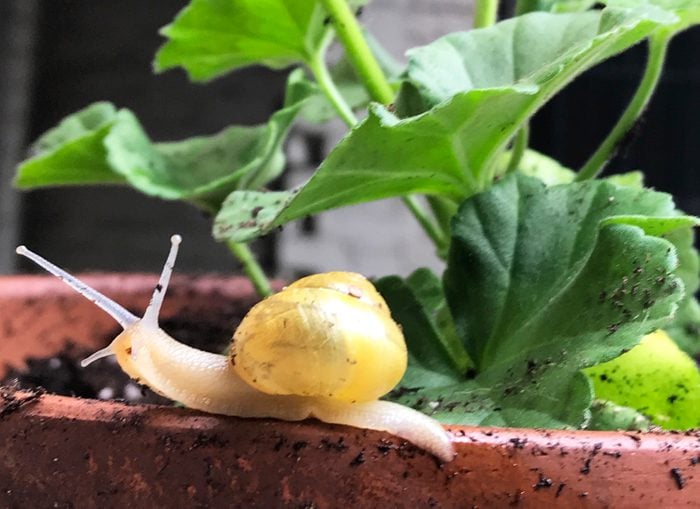
If you have plants, you’re probably wondering how to get rid of slugs and snails in the garden. Even if you may not see them often, they make their presence known by eating up to six times their weight in plant material per night. These mollusks can leave plants looking like Swiss cheese. Although they’re most active in the evening, it is possible to combat the pests any time of day with these simple strategies.
Here’s how to get rid of the 10 worst garden insects.
1. Beer Traps
Use beer to get rid of slugs and snails! Bury tuna fish cans or plastic yogurt cups in the dirt up to their rims, then crack a beer and fill the containers (the older and more stale the beer, the better). Slugs and snails are attracted to the yeasty aroma, then fall in and drown. Replace the beer as needed.
Got holes in your leafy greens? You have cabbage worms.
2. Course Moats
Add an inch of coarse sand, diatomaceous earth (look for it online or at garden centers), or eggshells in a 3-inch-wide band around plants. In dry weather, the slimy creatures won’t cross over the sharp material to get to their buffet.
3. Ash Barriers
Slugs and snails avoid wood ashes because of their alkalinity, so in the garden you can distribute wood ashes from the fireplace (but not charcoal, which may contain chemicals). Over time, ashes can increase the pH of soil, so use sparingly.
Check out 11 pictures that will change how you see bugs.
4. Copper Bands
It’s not cost-effective for a large number of plants, but place copper bands around prized plants that are vulnerable to attack. When slugs slither across the copper bands, the moisture in their slimy trails sets off an electrical shock, keeping the pests from continuing their journeys up the stem.
Learn how to get rid of indoor plant bugs.
5. Environmentally-Safe Baits
Iron-phosphate baits are considered safe for other animals but deadly for slugs and snails. The pests eat the bait, stop feeding and die within a few days. According to the Oregon State University Extension, iron-phosphate baits are just as effective as metaldehyde baits but are not toxic to wildlife or pets. Some brand names include Sluggo or Garden Safe Slug & Snail Bait.
Check out more natural ways to eliminate garden pests.
6. Pick Slugs and Snails Off Yourself
Use a flashlight to hunt for snails and slugs in the evening, about two hours after sunset. If you’re searching during the day, look in shady, damp areas and beneath leaves and garden debris for the pests. When you find a slug or snail, shake some salt on it-—the deadly ingredient dehydrates the pest. Or pick it up and place it in a jar filled with soapy water.
Meet 4 beneficial insects you want to see in your garden.
7. Attract and Get Rid of Slugs and Snails
Set a trap by placing boards in shady areas of the garden where slugs and snails hide in the daytime. Lift up the boards and scrape off the pests. You can do the same thing with inverted grapefruit rinds in problem areas. Turn them over in the morning, scrape out and destroy, and enjoy your pesticide-free garden with fewer slugs.
Discover 7 natural ways to keep bees and wasps away from hummingbird feeders.
Other Pest Solutions
Use these simple and easy techniques to keep your yard safe from bad bugs and pesticides.
- Dislodge aphids, mites and spittlebugs with a blast from the hose.
- Shake the base of a plant to remove adult Japanese beetles and drop them into a soapy jar of water.
- Destroy plants that have scale. Other than small-scale infestations, it’s usually easiest to just get rid of the plant.
- Encourage lady beetles to visit and eat aphids and spider mites.
- Remove larger pests like squash bugs and tomato hornworms from plants and dispose of them. Tomato hornworms grow to be sphinx moths so some gardeners chose to put up with the damage they cause.

Most of us see backyard butterflies fluttering in bright sunny gardens but, occasionally, you’ll find groups in unexpected places like a patch of mud, sandy riverbank or a DIY puddle station, which is called a butterfly puddler. Butterflies need sweet nectar from gardens to give them energy, but they also need the nutrients from these soggy areas.
How to Create a DIY Butterfly Puddler
Help butterflies, especially during dry weather, with a DIY backyard butterfly puddler spot.
- Find and fill a shallow dish or container with soil or sand. Add a few flat rocks to provide perching spots.
- Pour enough water in the container to moisten the soil, and sprinkle some salt on the surface. Also set out overripe fruit like bananas and oranges.
- Keep the soil moist during the heat of the day, when butterflies are more likely to visit.
Follow these tips for watching and photographing butterflies.
What Is Butterfly Puddling?
Butterfly puddling is when a butterfly visits and gathers nutrients from a puddle, usually as part of a larger group. A closer look will reveal they are likely males.
“Male butterflies, just like any living creature, are trying to ensure they reproduce,” explains Ryan Fessenden of the Florida Museum of Natural History’s Butterfly Rainforest. “One of the ways they do that is by passing on nutrients, along with genetic material, to the females when they are mating.”
When butterflies mate, males transfer a spermatophore to the females. Think of this as a tiny package that holds just about everything a female needs to produce healthy fertilized eggs. These spermatophores can be very large relatively, making up as much as 10% of a male butterfly’s weight. Part of the package includes nutrients that help support the female butterfly’s health, making her offspring more likely to survive.
“Male butterflies gather those nutrients by drinking water from wet spots on the ground, collecting various minerals and nutrients such as sodium and amino acids,” Ryan says.
Follow the stages of the monarch butterfly life cycle.
Where Do Butterflies Puddle?
And it’s not just the mud that attracts butterflies. Like other animals, butterflies need salt in their diet, and they find it in some very unexpected spots. “You may find a butterfly seeking out these valuable nutrients in other unusual locations, such as in tears on a crocodile or in sweat on human skin,” Ryan says. They’re also drawn to less savory items such as decaying flesh and excrement. There’s even a group of moths in Central America that puddle on blood.
Off-putting as it may seem, these behaviors are vital to their survival. That’s why you may see huge swarms of dozens or even hundreds of butterflies when a good puddling spot appears. “The more males that can gather nutrients, the more success the species will have reproducing,” Ryan says. “So when a wet spot or puddle is found by one, other butterflies will notice and join in.”
Check out 10 beautiful butterfly pictures you HAVE to see.

Which Butterflies Use a Puddler?
Any type of butterfly can use a puddler, but it’s most common in members of the swallowtail family (like these common swallowtails you should know), sulphurs and whites. In particular, look for tiger swallowtails, red-spotted purples, white admirals, cabbage whites, and clouded and cloudless sulphurs at butterfly puddlers. They are all there for one reason—to ensure they survive and thrive for many generations to come.
Next, check out myths and facts about butterfly host plants.

Summer storms or heavy wind and ice often damage trees across the country. Homeowners need to know the best ways to clean up after a tree is damaged and how to restore trees in their communities. From watching the light flicker through a tree’s green canopy in summer to enjoying the falling cascade of red, yellow, and brown leaves in the fall, trees enrich our lives in many ways. Storms can damage or destroy long-living trees and the memories they carry with them. Here’s what you need to know about tree storm damage.
What Happens After a Storm Damages Trees?
When a tree is damaged by a storm, tornado, hurricane, or another type of disturbance, it not only affects the immediate area, but also the surrounding trees.
“Trees are usually very resilient to damage,” says University of Illinois Extension horticulture educator Ryan Pankau. “But when a storm or disease takes out parts of a tree, it exposes the other trees in the area differently, and you may see damage to them years down the line.”
After a disturbance, sunlight can now reach the understory. This exposes the soil and creates opportunities for new plants to fill those gaps. Those gaps can be filled by younger trees or plants, but also by less desirable plants, such as invasive weedy species. And, a thinning tree canopy from storm damage can reduce a tree’s capacity to filter wind.
“Trees with thicker canopies act like a sail during high winds,” says Christopher Enroth, Illinois Extension horticulture educator. “But when thinned, small, new branches have a very weak attachment to the tree itself, making it less stable overall.”
Check out the best types of evergreen trees and how to care for them.

How Should Homeowners Respond to Tree Storm Damage?
After the storm has passed, make sure the area is safe. Avoid areas with downed power lines, as they may still be active and are very dangerous.
The first thing to do is clear out the obvious broken, hanging limbs. Then, look at the angle of the leaves on branches still attached to the tree. They will give away tree limbs that might be broken and could fall later.
“The next course of action is to have a tree care professional or a certified arborist assess the damage,” says University of Illinois Extension Extension Forester Chris Evans. “They’ll make sure no pathogens have leeched into the trees after they’ve been damaged and to properly prune them.”
Pruning cuts off any stubs or chunks off a broken limb to seal the wood and help avoid rot that can slowly kill a tree over time.
“Trees don’t heal, they seal,” says Pankau. “Trees don’t regenerate tissues like humans. They will just grow around the wound and lock it into itself.”
Find a list of certified arborists at Treesaregood.org and search by zip code.
Check out the top 10 quick growing trees for your landscape.
What to Ask an Arborist About Storm Damaged Trees
Every summer, Extension offices get calls about trees after a storm. Here are some common concerns:
- Despite the storm damage, is the tree healthy with good growth?
- Did the trunk experience significant damage? The vascular tissue of a tree resides directly behind the bark. If this critical tissue is severed, a tree cannot move water and nutrients through its system.
- Are major limbs broken? The larger the lost limb, the harder it will be for the tree to seal off that wound.
- Is the tree desirable, or is it prone to problems? Sometimes storms present opportunities to replace a problem tree.
- Is the overall shape of the tree still intact? For instance, if a white pine loses the central leader, the tree will lose its pyramidal shape and become a hazard in the future.
Discover 8 types of Christmas trees you can grow.
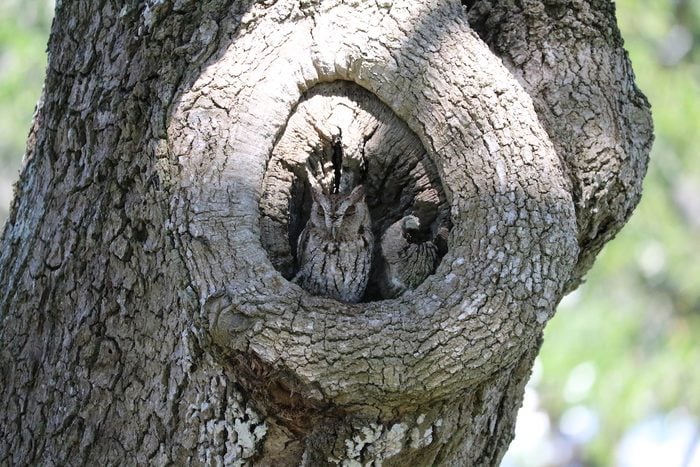
How to Prevent Tree Storm Damage
Rural areas
In a forested setting, trees provide stable ecosystems and create habitats for all types of wildlife, including squirrels and cavity nesting birds. A healthy forested area needs to have a wide diversity of tree species. This is also important to follow the recommended stocking rate, or density of a forest. This stops undesirable trees from growing in the understory. Try these alternatives to invasive shrubs.
“Since you can’t go out and prune every tree on your property, it’s important to remove overcrowding and invasive species so you can achieve a healthy, flourishing ecosystem and provide habitats for critical organisms,” says Evans. These efforts not only keep a forest healthy, but also strengthen the woodland’s resilience against disturbances.
Urban areas
Trees are meant to grow near other trees and not individually like most urban settings. To maintain the health of trees, it pays to have a certified arborist inspection done every few years to make needed pruning cuts. To prevent damage, arborists can also apply cables and bolts.
“However, with enough wind and enough force, no amount of pruning or inspection is going to stop that tree from coming down in a bad enough storm,” says Pankau. “Still, arborists can sure stack the odds in your favor.”
Here’s the top 10 trees and shrubs with berries for birds.
Why Should You Replace Trees?
When trees are knocked down, it can change a community. Wildlife no longer has a place to nest, children lose a place to play, and homes are no longer shaded from the summer heat.
Trees provide a lot of unappreciated services in the background. They create habitat for insects, birds, and other native wildlife, and take up water which reduces flooding. They also increase air quality and trap carbon dioxide, a greenhouse gas, to slow the rate of global warming. In the warmer months, trees that shade homes will reduce energy bills and in the winter months, bare branches allow sunlight to heat homes.
Of all green spaces, trees seem to have a special impact on people’s mental health. Research from University of Illinois has found that when people have experiences with nature, they’re healthier, happier, learn better, and have stronger social ties. Green spaces are also tied to lower rates of depression and anxiety disorders.
“We, as humans, are meant to be in nature. When you put us in an environment that takes it away, we behave and feel badly,” says Pankau.
Psst—don’t miss these amazing nature photos.
How to Select New Trees
“The most important thing to consider when replanting trees after a storm is diversity,” says Evans.
Planting a variety of new trees, especially native trees, recreates a natural ecosystem, and leads to fewer pest issues, diseases, and invasive species.
Replacing damaged trees with native ones will add to the biodiversity of that area, letting insects, birds, and other organisms flourish in a healthier ecosystem. A study published in the journal Ecological Entomology in 2020 found the displacement of native plant communities is the main cause of a collapse in insect and bird populations around the world. To see if a tree is native, check at the USDA-approved hardiness zones located on the plant tag or online at planthardiness.ars.usda.gov.
Research specific species to see if it would be a good fit for your landscape and ask a certified arborist for verification. Some species, such as oak trees, have a competitive advantage. Compared to shady beech and maple trees, oak trees will take 40% to 60% of the available sunlight to compete with other plants and leave other species to die off.
Follow these 5 essential steps for tree planting success.
Even if you know your local birds, sometimes an unfamiliar one will appear that doesn’t match anything you’ve seen before. Or maybe you’re just getting started with bird-watching. We have some pointers and questions to ask that will help you confidently spot more species. Here’s how to identify birds.
Watch the Bird Closely
Don’t immediately reach for your field guide. Instead, pay attention to the bird. What does it look and sound like? How does it move? The book won’t fly away, but the bird will.
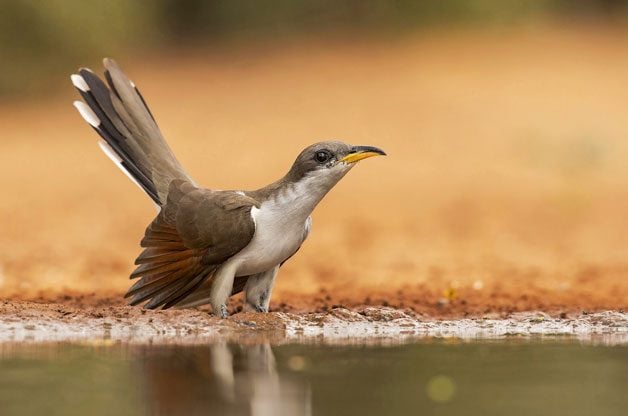
Compare the Bird’s Size and Shape
A bird’s size is hard to judge, so compare it to a well-known species to identify the bird. It’s more helpful to say “robin-sized” or “smaller than a sparrow” than estimate its size in inches. Notice its body and bill shape, too. Is the bird stout or slender? Long-tailed or short-tailed? Is the bill thin like a warbler’s or thick like a finch’s?
Check out spring warbler birds you should know.
Consider Surroundings, Behavior and Habitat
An open field is home to other birds than a forest or on the open waters of a lake. Even within the same habitat, different birds will seek out different niches. Is your mystery bird hopping on the ground, climbing up a tree trunk or flitting around the tips of twigs? These behaviors offer good clues as you learn how to identify birds.
Learn about western birds and their eastern counterparts.
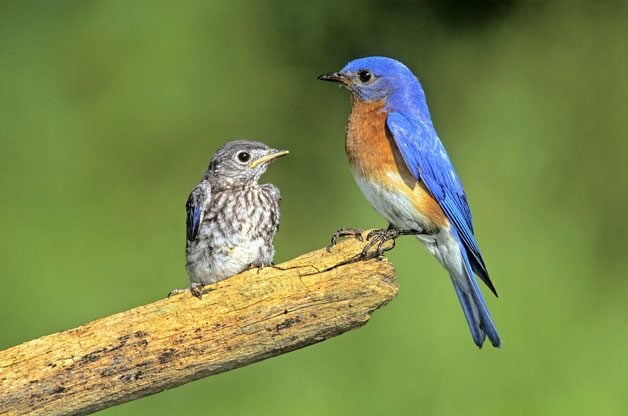
Look for Field Marks
We know it’s sometimes difficult but one of the best ways how to identify birds is to get a clear look. The markings on a bird can tell you a lot. Does it have a ring around its eye or a stripe above it? Is the chest spotted or striped? A good pair of binoculars can be helpful to observe these details.
Watch for Tricky Birds
Some oddities can be chalked up to perplexing plumage of common local species. Is it possible the bird is leucistic with patches of white feathers? Could it be stained from something it was eating? Could it be a young bird with juvenile plumage different from that of its parents? Or maybe it is molting into winter plumage.
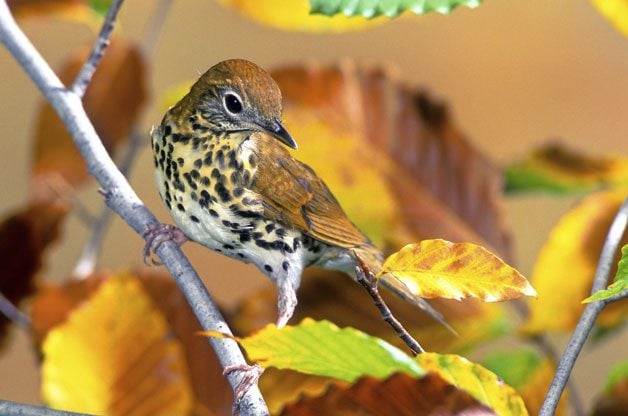
Write Down Details
Don’t rely on memory alone. It’s best practice to record your observations in a notebook before you look in a field guide or online to identify the bird. If you start writing a description while the bird is still around, you may notice details you would otherwise miss or forget.
Birding in the city: Learn how to be an urban birder.
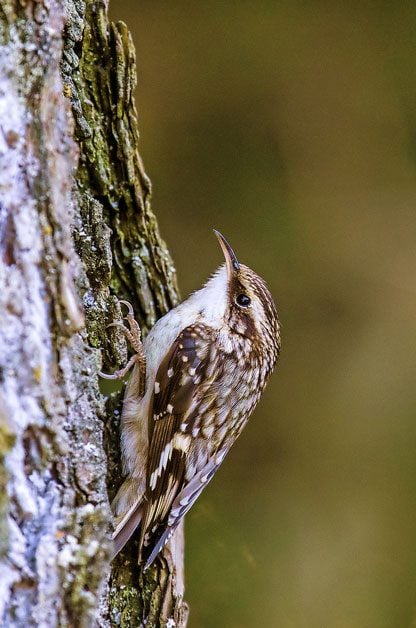
Take a Photo
Even a distant or lower quality image may help pin down the ID. If your phone has a camera, take advantage and snap several pictures. Just don’t waste a lot of time trying to get the perfect shot; you need to look at the bird, too. Check out the ultimate guide to backyard bird photography.
Bird ID Cheat Sheet
Make note of these key clues.
- Shape: Observe the bird’s bill and body shape, as well as tail and leg length.
- Size: Compare the bird’s size to another known species, if possible.
- Location: Range, season and habitat all help narrow down the likely choices.
- Behavior: Be sure to notice whether the bird is hopping on the ground, soaring, climbing trees or doing something else.
- Field marks: Pay close attention to stripes on the body, wing bars, eye rings, and head stripes or spots.
- Color: Any bright or unusual colors might help clinch the ID.
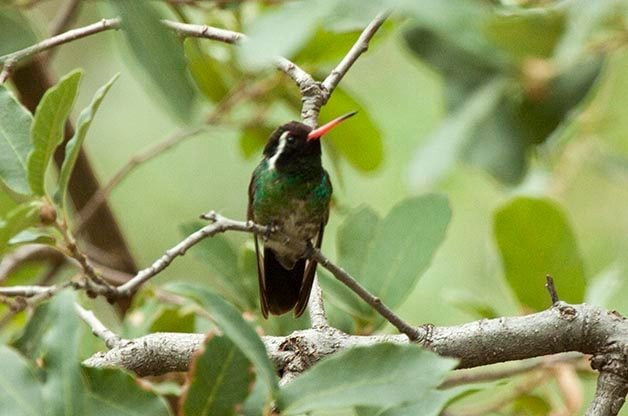
What if You Spot a Rare Bird
- Consider whether you should share the sighting. If the bird is truly rare, hundreds of birders may want to see it. That’s fine if it’s a public park, but could be a problem if it’s a feeder outside your bedroom window.
- If you decide to report the sighting, confirm the ID with good photos and share them with a local expert. Check with the National Audubon Society, audubon.org, for nearby chapters or centers. Or, contact the American Birding Association at aba.org/contact.
Check out amazing sightings of rare yellow cardinals.
You might already love watching swallowtails in the garden, but there’s much more to learn about these stunning pollinators. Enjoy these fascinating swallowtail butterfly facts.

1. Female Swallowtail Butterflies Produce Many Eggs
A female black swallowtail can lay up to 400 eggs in her short life. Check out 6 common swallowtail butterflies you should know.

2. The Most Popular Swallowtail is Common in Backyards
The eastern tiger is one of the most common and well-known swallowtails in the U.S. Here’s a fun fact—this yellow butterfly has even made an appearance on two official postage stamps.
Grow the the top 10 plants for swallowtail butterflies.

3. One Swallowtail is the Largest Butterfly in North America
Here’s one of the biggest and best swallowtail butterfly facts! With a wingspan of up to 6 1/4 inches, the giant swallowtail is the largest North American butterfly.
Check out these unique gifts for butterfly lovers.

4. Zebra Swallowtails Have a Unique Look
You know that birds and squirrels have long tails, but some butterflies do too! Zebra swallowtails have longer tails on their hindwings than any other species—up to 1 inch long.
Check out the top butterfly host plants that attract pollinators.

5. Dozens of Swallowtail Species Live in North America
More than 550 species of swallowtails are found around the world. At least 30 of them can be spotted in North America. Use this butterfly ID cheat sheet to help identify the butterflies in your backyard.
Learn how to attract pipevine swallowtail butterflies to your garden.
6. Visit Florida to See Rare Swallowtails
While most swallowtails are more common, the Florida Keys are the only place to see 350 federally endangered Schaus swallowtails. Travel to south Texas to see hundreds of rare butterflies.
Next, check out six fascinating dragonfly facts you should know.
How Do I Get Rid of Wasp Nests in a Birdhouse?
How can I keep wasps out of birdhouses? asks Robert Talbert of Payson, Utah.
Kenn and Kimberly: This can be a challenge. You should never use insecticides or pesticides on birdhouses to keep wasps out. Those chemicals are harmful for the birds, too. Many bird species eat insects. Yellow jackets and other wasps chew up bits of wood to create paper, using it to fashion elaborate hanging nests. They’re attracted to birdhouses, which offer sheltered nesting spots.
If you’re monitoring the house closely, you can remove wasp nests just after they start to build their hives. Open up the birdhouse on a chilly night when the wasps are sluggish and knock the nest down.
Psst—This is the only bird nesting material you should put out.

Another idea is to rub a bar of soap on the inside of the birdhouse roof or the top of the nesting box. The slick surface makes it impossible for the wasps to attach the base of their nests to the roof. So they give up and go elsewhere. You should only do this if the house is designed with the entrance hole at least an inch or two below the top to reduce the chance that birds could accidentally get soap on their feathers.
Next, learn how to tell the difference between bees and wasps.

Monarch butterfly sightings thrill gardeners and nature lovers. The world’s most famous and beloved butterfly is renowned for its migration. Multiple generations work their way north during spring and summer, then a fall generation flies all the way to southern Mexico or to the California coast to spend the winter. While their population numbers have declined in recent years, monarchs still add beauty and color to our backyards. But you may have wondered if the sight of a monarch butterfly has meaning or symbolism, or even if it’s a spiritual sign. Here’s what you should know.
Discover 9 fascinating monarch butterfly facts.

Monarch Butterfly Meaning and Symbolism
In a nod to their life cycle, from egg to caterpillar to butterfly, monarchs can represent transformation and rebirth to some people. They might view a monarch sighting as a sign of upcoming change or a new direction in their life. Perhaps due to their long (up to 3,000 miles!) migration journey, these butterflies may also be an inspirational sign of strength and endurance. If you see a hummingbird or a cardinal, those sightings have special meaning, too. Plus, we chatted with our field editors about what seeing a wren means to them.
Monarchs face a lot of challenges, including climate change and deforestation. Some sources indicate the butterflies are a symbol of hope and resilience.
Are monarch butterflies endangered?

Monarch Butterfly Spiritual Meaning
Monarch butterflies have significant meaning in the Mexican culture. During the Day of the Dead holiday, the Mexican people see the arrival of monarchs as a spiritual symbol. Many believe the butterflies represent the souls of their ancestors returning to visit and bring comfort to loved ones. Revelers may even dress up as monarch butterflies in parades and other celebrations. Due to the butterflies’ yearly migration between countries, images of monarchs are also are used to show support for immigrants. Use this monarch migration map to track the butterflies’ epic voyage.
Next, check out the ultimate guide to growing milkweed plants for monarchs.
